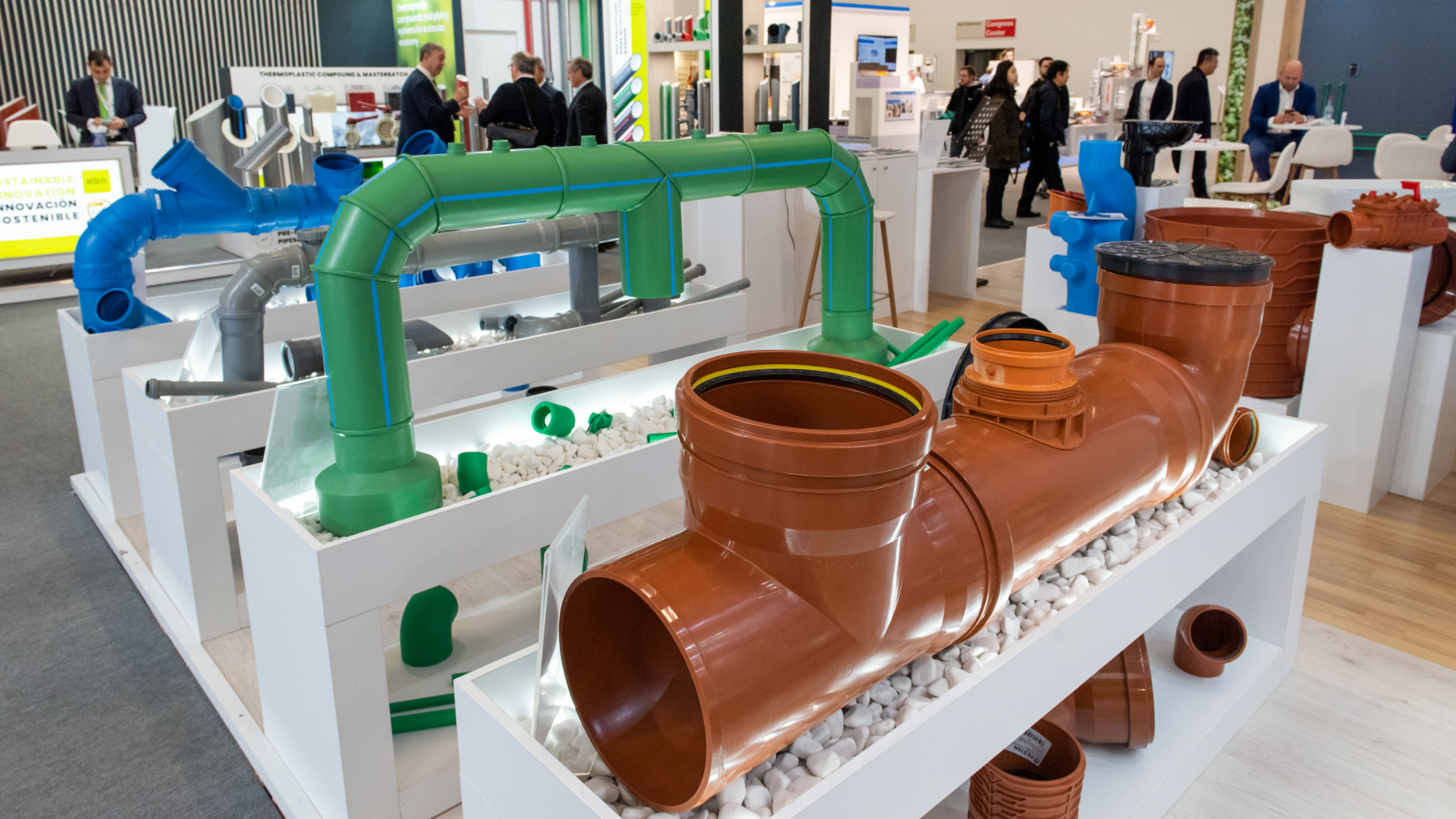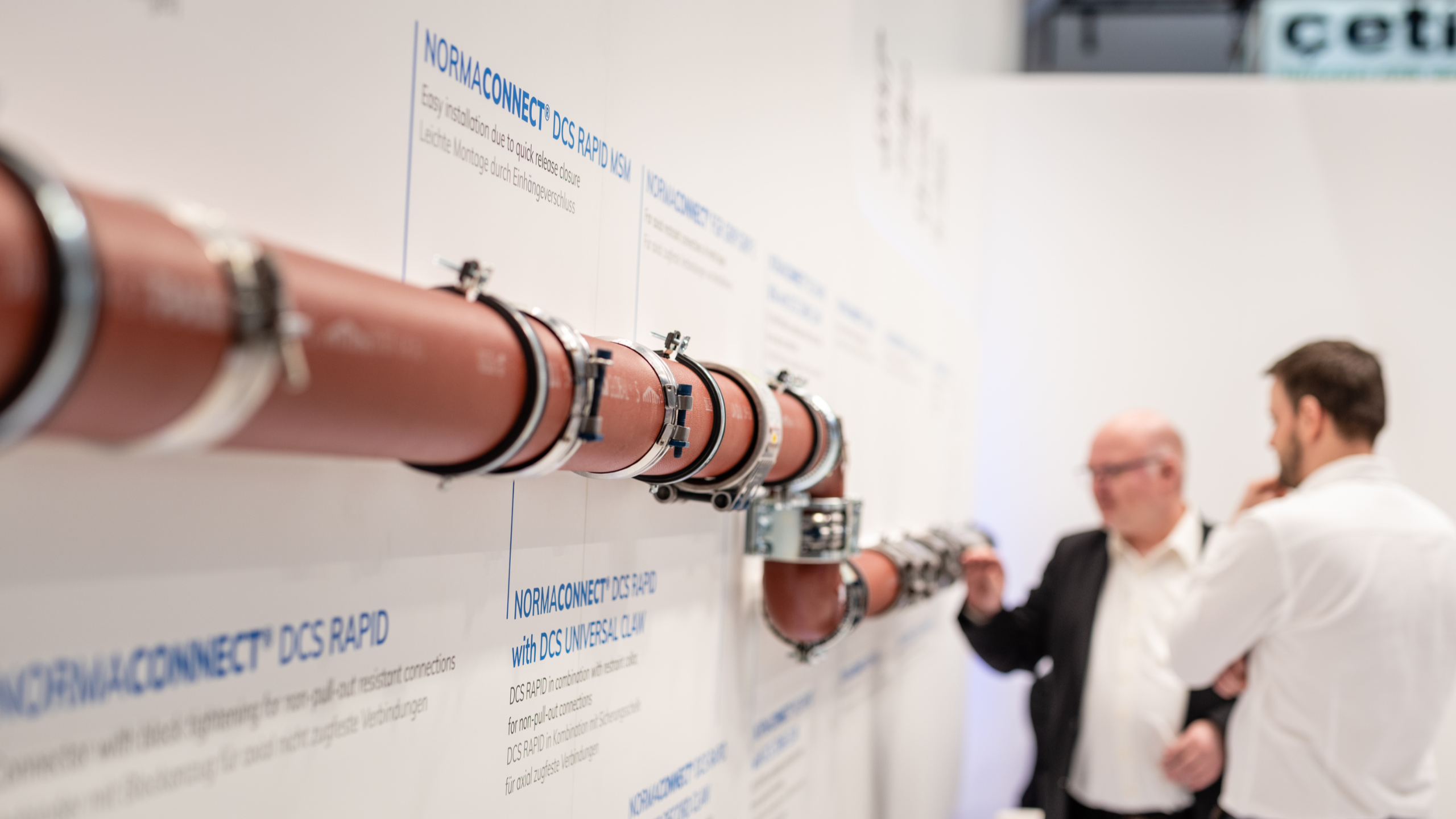Efficient components and systems for building drainage

Reliable building drainage is a cornerstone of hygienic and sustainable building operation. Countless drainage-system components, e.g. drainage pumps, pipes, fittings and drains, must work together seamlessly to ensure that water is drained cleanly and safely. At the ISH trade fair, visitors can discover the latest technological innovations that are making building drainage even safer and more efficient.
Drainage pumps: performance and reliability
Innovative control systems optimise the energy consumption of modern sewage pumps and ensure constant, trouble-free drainage. Intelligent drainage pumps dynamically adjust the flow rate in line with changing sewage loads and use a self-monitoring system to check their operating status. With increasing use of AI, this preventive maintenance, also known as predictive maintenance, minimises wear and tear and the risk of damage due to leaks.
Pipes: material and connection technology trends
The right material for the pipes is crucial for the efficiency and durability of the drainage system. The current trend is towards materials that are both durable and easy to maintain:
- Heavy-duty plastics such as high-density polyethylene offer excellent chemical resistance and are easy to install.
- Fireproof cast iron ensures a high level of safety in critical areas.
- Innovative composite materials combine advantages such as the corrosion resistance of plastics with the stability of metals.
Innovative joining technologies such as press-fit connection systems enable quick, safe and weld-free assembly, which not only shortens the installation time but also minimises the risk of installation errors.
Backflow protection: equipped for heavy rain
Backflow can occur when the sewer system is overloaded, for example due to heavy rainfall. Therefore, the installation of a backflow protection device is essential to avoid damage and hygiene problems, especially in areas with frequent heavy rainfall.
Modern backflow prevention devices use smart sensors to monitor both water pressure and flow. A remote control allows for quick response to anomalies – even from off-site. Advances in materials and design mean check valves are now more reliable than ever. Automatic shut-off valves that work without expensive actuators provide additional protection against water damage in critical areas.
Ventilating and venting sewage pipes
Adequate ventilation and venting of sewage pipes is essential to avoid underpressure and ensure smooth operation of sewage systems. New ventilation technologies such as secondary ventilation pipes and stack aerators improve both indoor air quality and energy efficiency.
Fittings: precision and functionality
Modern fittings for drainage systems are custom-made using CAD/CAM technologies. The resulting precision improves flow dynamics and minimises turbulence in the sewage system. However, there is more happening in the market for fittings:
- Prefabricated fittings are characterised by a high degree of precision and reduced flow resistance, which improves the overall performance of the drainage system while reducing the risk of leakage.
- Combined fittings unite several functions in a single component, including changes of direction, diameter changes and inspection openings, which not only reduces the number of joints required but also lowers the number of potential weak points in the system.
- Innovative materials such as fibre-reinforced plastics or high-performance composites improve corrosion resistance and durability while reducing the weight of fittings.
- Sound-absorbing fittings can significantly reduce levels of noise in sewage systems.
The integration of fittings into Building Information Modelling (BIM) systems has revolutionised both the design and maintenance of drainage systems. BIM-compatible fittings complete the digital representation of the entire drainage system.
Hygienic and intelligent processes
Modern drainage systems are equipped with IoT sensors that monitor water flow and respond to blockages proactively. These smart systems help to prevent flooding and maintain hygiene in buildings. Self-cleaning drainage systems also help to ensure high standards of hygiene in buildings by using special surface treatments and mechanical cleaning mechanisms to prevent blockages.
Drainage systems: trends and innovations
The introduction of siphonic drainage systems represents a further improvement in the drainage of buildings. These systems use the vacuum effect to drain rainwater very efficiently from roofs.
From intelligent drainage systems to highly efficient pumps and modular components – the solutions presented at the ISH trade fair show how building drainage systems can be made more efficient and reliable.
